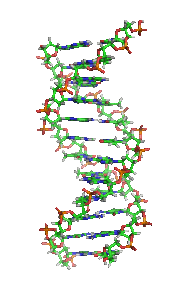Mexican therapy increases survival of cervical cancer patients
Friday, June 19, 2009


A research team from the Institute of Biomedical Research of the National Autonomous University of Mexico has developed a therapy that extends survival for locally advanced cervical cancer patients. The study was started at the National Oncology Institute, before trials were conducted worldwide.
The new treatment, which serves as a guideline worldwide, involves using the drug gemcitabine as a radiosensibilizing agent to potentiate the effects of a regime of cisplatin chemotherapy and radiotherapy, explained Alfonso Dueñas González, who led the study. Despite the addition of another drug making the scheme slightly more toxic, the secondary effects are acute and are present only during the 70 to 80 days the treatment lasts, during which the patient can become weak, as with any chemotherapy.
Under this treatment, the survival of patients rises to 78 percent. This is 9 percent above conventional methods, as concluded the study in its phase III, which lasted four years and involved 515 patients from different countries.
Despite cervical cancer being preventable if detected early by the Pap test, it causes more than 250,000 deaths a year worldwide, becoming the second cause of death by carcinoma among women, and the second most diagnosed illness in this group.
One of the advantages of this therapy is that both gemcitabine and cisplatin are affordable drugs, which makes it available for the world population and may help reduce the death rate by this disease. According to Dueñas González, although cervical cancer should be fought by focusing on early detection rather than on treatment, the therapy is expected to start being used in short by health institutions throughout the world.
Sources
- Laura Romero. "Crean terapia contra cáncer cervicouterino avanzado" — IntraMed, June 17, 2009 (Spanish)
- Press Release: "Treatment Regimen Extends Survival for Women with Cervical Cancer" — National Cancer Institute, June 16, 2009
- "Desarrolla UNAM terapia contra cáncer cervicouterino avanzado" — La Jornada, June 12, 2009 (Spanish)


